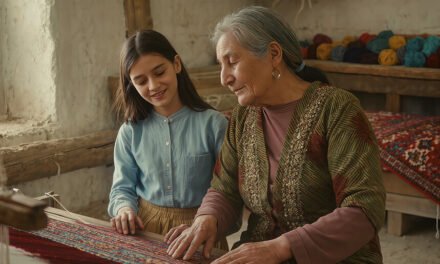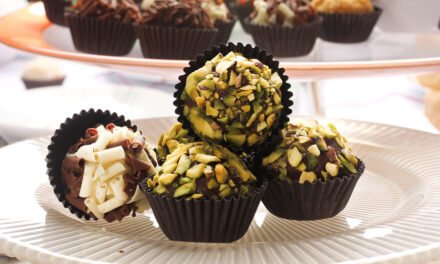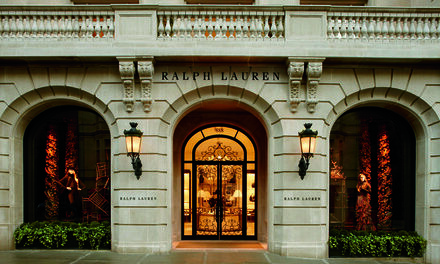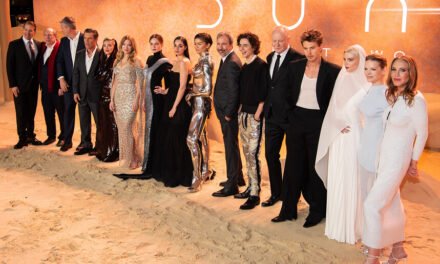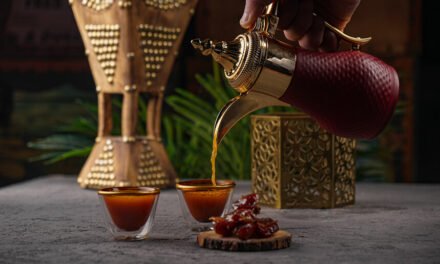“Once upon a time” wasn’t so long ago.
Before Sephora stocked rosewater toners.
Before gold stacked high on every red carpet.
Before the world danced Dabke in the streets.
There was a rhythm—quiet but persistent. A rhythm that flowed through the hands of artisans, the hearts of hosts, the flick of a kohl-lined gaze. It wasn’t branded, labeled, or hashtagged. It simply was. And it came from the Arab world.
Today, that rhythm hasn’t disappeared. It’s just evolved.
It hums beneath the global trends we celebrate. It whispers through our routines, our rituals, our wardrobes. Arab heritage isn’t just tradition. It’s the undercurrent of the now.
At ALO Magazine, we’re celebrating the influence that’s been here all along.
Liner with a Legacy

The camera flashes. A model steps onto the runway. Her gaze is fierce, framed by the same black lines that once protected desert dwellers from sun and spirit.
Kohl isn’t just makeup. It’s memory.
Used for centuries from Egypt to Yemen, it shielded, beautified, and signaled strength.
And yet, it’s trending—again. Beauty influencers call it “Arab eyeliner.” Fashion weeks can’t get enough. But it was never lost.
You didn’t discover kohl. Your ancestors just forgot it.
Gold, Then and Now

The camera flashes. A model steps onto the runway. Her gaze is fierce, framed by the same black lines that once protected desert dwellers from sun and spirit.
Kohl isn’t just makeup. It’s memory.
Used for centuries from Egypt to Yemen, it shielded, beautified, and signaled strength.
And yet, it’s trending—again. Beauty influencers call it “Arab eyeliner.” Fashion weeks can’t get enough. But it was never lost.
You didn’t discover kohl. Your ancestors just forgot it.
In a world obsessed with minimalism, something bold refuses to be quiet: gold. Thick bangles. Heavy rings. Coins passed from one palm to another—not for profit, but for meaning.
Arab culture has always understood what gold really is: wearable history.
Not accessory, but inheritance. Not trend, but testament.
Today, global brands race to recreate the look. But in every Empyrria piece, there’s a deeper story—of protection, power, and permanence. Whether in a handcrafted 22K band or a blue stone set to shield from envy, the adornment is never just decoration. It’s identity.
Arab aunties walked so your gold stack could run.
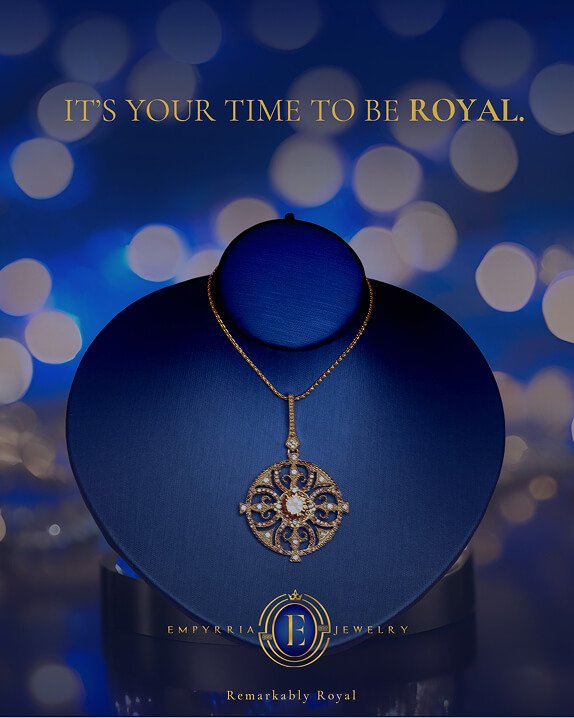
The Beauty in Ritual

Step into a modern spa, and you’ll find echoes of ancient hammams. Argan oils in glass bottles. Cupping therapy for skin renewal. Scented oud diffusing through the air.
These aren’t trends. They’re time travel.
Arab women have long passed these rituals from mother to daughter. Today, beauty shelves overflow with them—but their essence isn’t just in product. It’s in the pause. The care. The connection.
From hammam to vanity, the ritual remains.
To Be Welcomed Is to Belong

The door is always open. The tea is always steeping. The table is always full.
In Arab culture, hospitality is more than generosity—it’s art. To serve is to honor. To host is to love. From embroidered tablecloths to golden trays of sweets, no detail is too small when a guest is present.
That warmth has gone global—plated on Pinterest boards, staged in dinner party reels. But behind every tablescape trend is a truth: Arab hospitality isn’t performative. It’s ancestral.
The vibe? Make yourself at home—and don’t you dare leave hungry.
When Culture Becomes the Beat

You hear it before you know it—strings that swell, drums that thump, voices that soar in unfamiliar scales. It’s not background music. It’s storytelling.
Arab music has seeped into the global soundscape, carried by artists like Elyanna, Saint Levant, and Omar Apollo, whose identities stretch across continents. Their music doesn’t blend East and West—it builds a bridge.
And at weddings, in city squares, in TikToks gone viral, Dabke brings people together—one stomp at a time.
This isn’t fusion. It’s a full-circle moment.
Flavor with a Soul
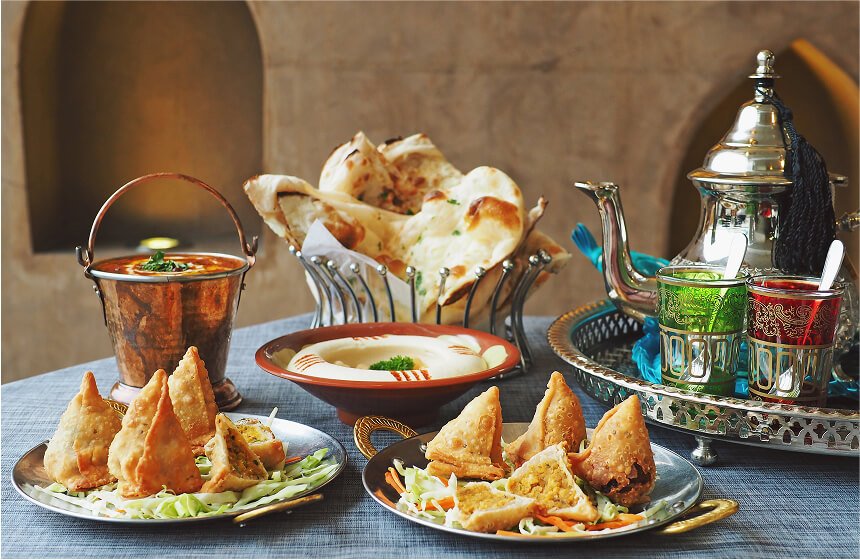
Open your fridge. You might find hummus. Maybe dates. Perhaps rose-flavored chocolate or pistachio-stuffed pastries.
But look closer—and you’ll find history.
Arab cuisine isn’t just delicious—it’s deeply symbolic. It nourishes more than the body. It anchors the spirit. And as Dubai-style sweets take over luxury boxes and souk-style spreads go gourmet, one thing is clear:
When your sweet tooth has a passport, the journey is delicious.
The Fabric of Fashion

Across runways from Beirut to Milan, Arab silhouettes are being reimagined. Flowy kaftans. Intricate embroidery. Headscarves as high fashion. Designers like Elie Saab and Zuhair Murad don’t imitate trends—they set them.
Arab fashion tells stories with thread. And now, the global industry is listening. Finally.
Arab heritage isn’t in style—it is the style.
This Isn’t a Comeback. It’s a Continuation.
To some, these are discoveries.
To others, they’re home.
The Arab world has always been a fountain of creativity, care, and culture. Now, the world is catching on—but the roots remain the same. Grounded. Glorious. Ongoing.
At ALO, we celebrate Arab heritage not as a moment—but as a movement. One that crosses borders, blends eras, and redefines what it means to belong.
Because Arab heritage doesn’t need reinvention.
It needs recognition.



